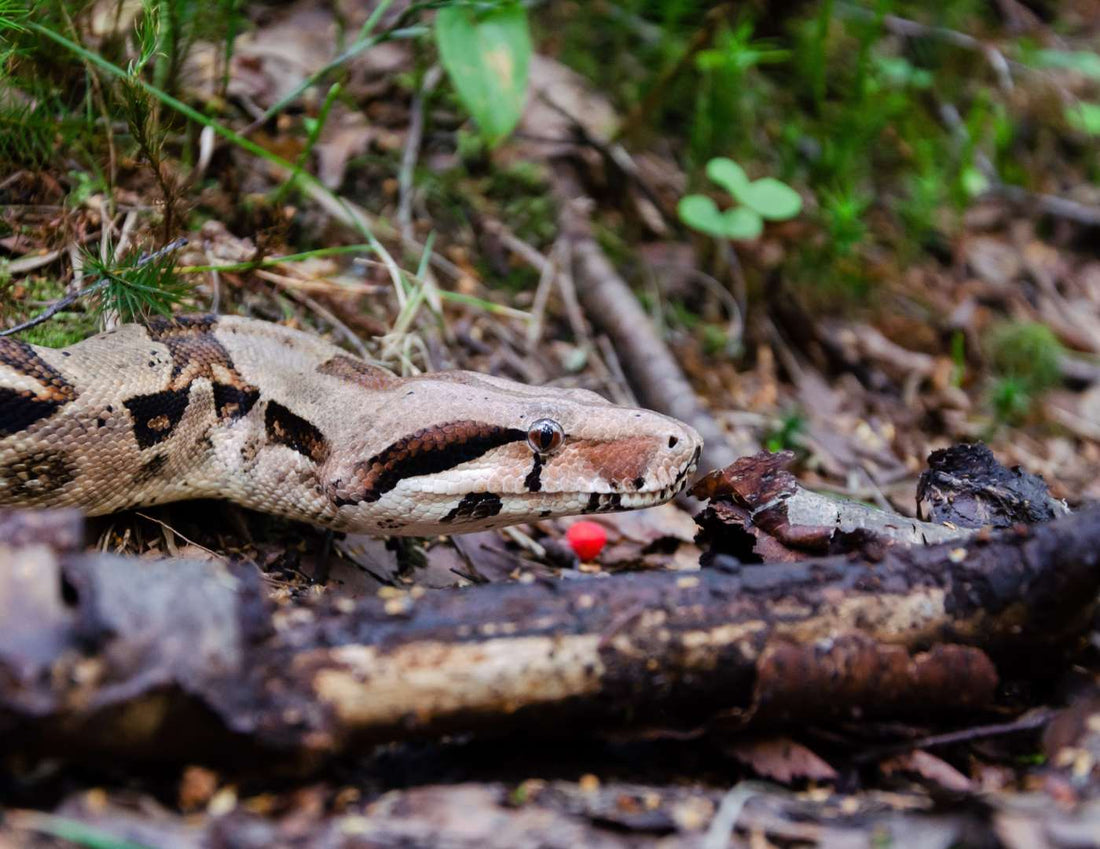
Costa Rican Boas: Species, Habitats, and Curiosities
BY NAMUBAKShare
Costa Rica is home to astonishing biodiversity, and its jungles and mangroves are home to some of the continent's most fascinating snakes: Costa Rican boas . Belonging to the Boidae family, these non-venomous snakes play a vital ecological role and are part of the natural balance of the country's tropical ecosystems.
Main types of boas in Costa Rica:
- Emperor boa (Boa imperator)
- Rainbow boa (Epicrates maurus)
- Annular boa (Corallus annulatus)
- Mangrove boa (Corallus ruschenbergerii)
In this article, we present the four species recorded in the country, based on scientific information from biologist M.Sc. Pompilio Campos Ch.
Types of Boa in Costa Rica
1. Bequer (Boa imperator): The largest in Costa Rica
The Boa imperator is the largest snake in Costa Rica, reaching up to 3 meters in length . It is characterized by:
- Elliptical pupil
- Robust body, smooth scales
- Aglyphous dentition ( non-poisonous )
- Head covered with small scales
- Twilight and nocturnal activity
Its color pattern is highly variable, with irregular spots extending across the dorsal and lateral sides. This species is common in several areas of the country, especially in lowland jungle and dry forest.

2. Rainbow Boa (Epicrates maurus)
The rainbow boa , also known as Epicrates maurus , gets its name from the iridescent sheen of its scales under light. It is found primarily in the Caribbean region of Costa Rica.
- Approximate length: 1.5 meters
- Elliptical pupil and robust body
- Presence of labial pits (sensory organs that detect heat)
- Non-poisonous dentition
Juveniles have circular and spotted patterns, while adults take on a more uniform brown hue. They are nocturnal and very discreet snakes .

Photo by Esteban Alzate
3. Annular Boa (Corallus annulatus)
One of the most striking species due to its ringed coloration and arboreal behavior.
- Approximate length: 1.6 meters
- Long, thin, prehensile tail
- Elliptical pupil and smooth scales
- Visible labial pits
- Aglyphous dentition (non-poisonous)
It inhabits low-lying, humid areas, moving through branches at night. Its coloration varies, but always presents an irregular pattern that allows it to camouflage itself in the canopy.

Photo by Hubert Szcygiel
4. Mangrove Boa (Corallus ruschenbergerii)
Endemic to the mangroves of the Pacific and Caribbean, this species is distinguished by its yellowish hue with dark rhomboidal patterns.
- Length: 1.7 meters
- Elliptical pupil and well-marked labial pits
- Large and prominent eyes
- Smooth scales, thin and prehensile body
This species stands out for its nocturnal behavior and its perfect adaptation to the mangrove environment, where it plays a role as a predator of small vertebrates.
Learn about the importance of mangroves ecosystems
Photo by Maira Holguín Ruiz
Distribution of Boas in Costa Rica
The four species have well-defined ranges:
- Boa imperator : Wide distribution, especially in the North and Pacific.
- Epicrates maurus : Caribbean and lowland wetlands.
- Corallus annulatus : Southern Caribbean and rainforests.
- Corallus ruschenbergerii : Coastal mangrove zones.
Each one represents a unique component of the country's ecological balance.
Why are boas important in Costa Rica?
Boas control populations of rodents and small birds, preventing ecological imbalances. They are also indicators of environmental health , as their presence is associated with well-preserved ecosystems.
Also, because they are not poisonous, many of these species are victims of myths or unfounded fears, making them vulnerable to human persecution.
What to do if you see a boa?
- Don't kill her: she doesn't pose a danger if left undisturbed.
- Don't try to manipulate her.
- Notify authorities or experts if you are in an urban area.
Costa Rica's boas are not only fascinating for their shape and behavior, but also essential for maintaining the balance of ecosystems. They are silent predators that control pests, inhabit everything from mangroves to cloud forests, and remind us that each species has a sacred role in the web of life.
Protecting them also means protecting the biodiversity that makes Costa Rica unique. Understanding them, respecting them, and educating others is the first step toward ensuring their survival in a world increasingly threatened by habitat destruction and ignorance.
The next time you venture into the jungle or hear talk of snakes, remember that boas, like all snakes, are allies, not enemies.

